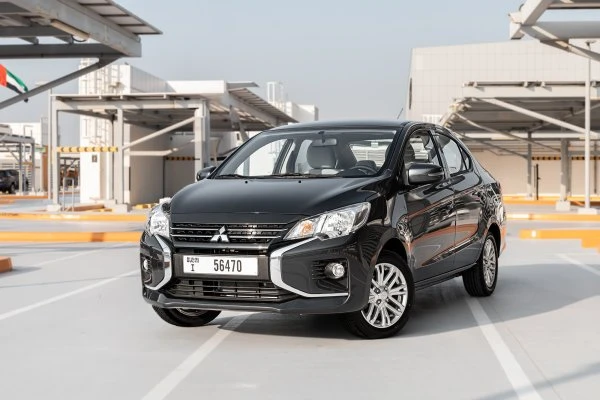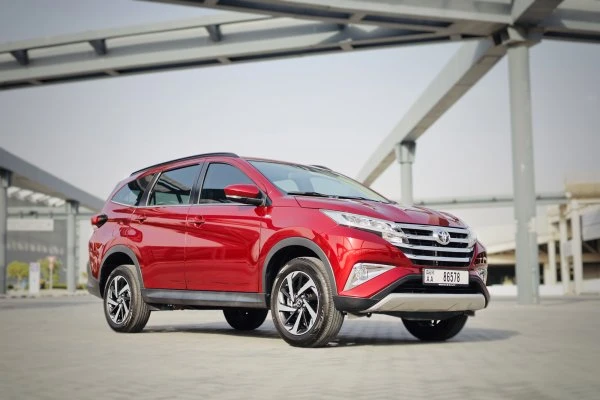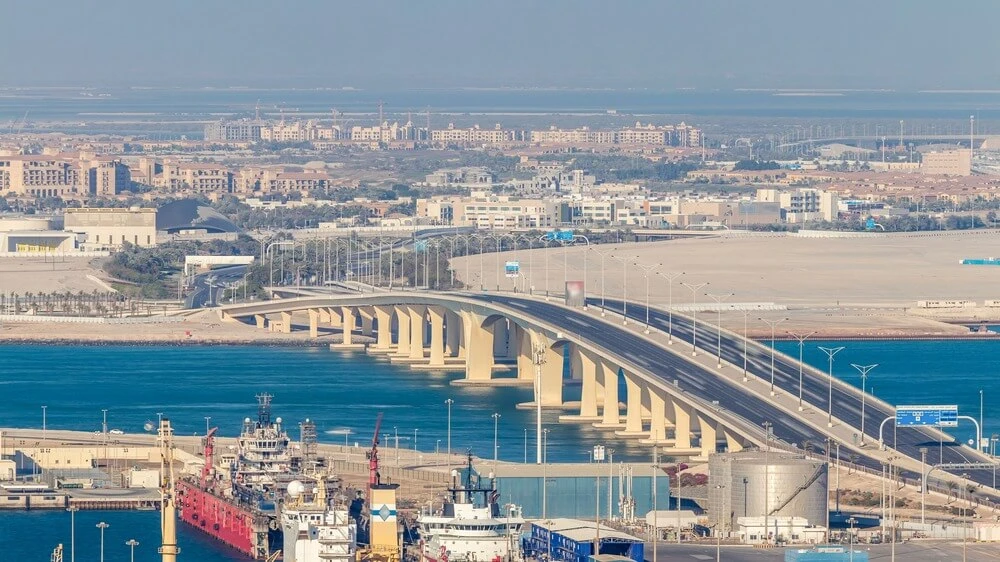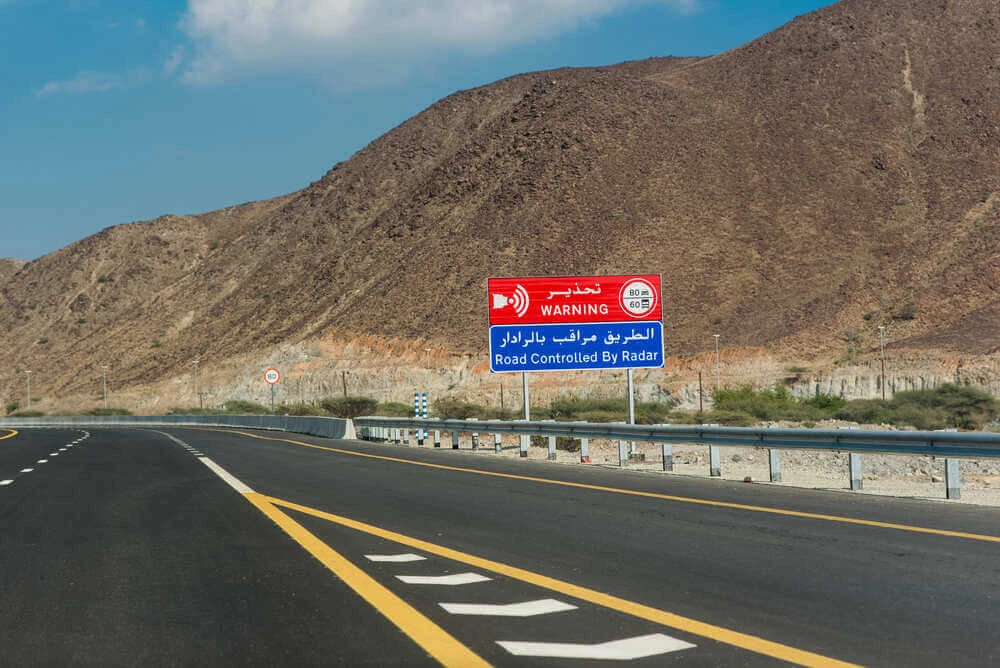- Where to Find the Chassis Number on a Car
- Official Ways to Check a Vehicle Chassis Number in UAE
- What You Can Learn from a Chassis Number Check
- How to Check a Chassis Number: Step-by-Step Guide
- Do You Need to Pay for a Chassis Number Check in the UAE?
- Tips Before Buying a Used Car in UAE
- Common Issues Found in VIN Reports
- Why You Should Never Skip the Checking Car Accident History in UAE
- FAQ
A chassis number check (or a VIN check) plays a crucial role in identifying serious issues: past damage, ownership conflicts, and even hidden liens. The risk of purchasing a second-hand car that has been involved in a collision is a real problem. Even if the car looks clean, appearances can be deceiving. That’s why checking the accident history in the UAE through the official databases is so important.
- What Is a VIN Number / Chassis Number? This unique 17-character sequence works like a fingerprint. The code assigned at the time of manufacturing includes data on the brand, engine type, model year, and location of production. Every car manufactured after 1981 has a VIN that complies with global standards, and it plays a central role in all official records, from insurance to registration.
This number is used by all UAE authorities to monitor ownership, issue technical reports, and confirm legal status.
- Why You Should Check Before Buying a Used Car: Used vehicles can come with skeletons in the closet. The car might be advertised as accident-free, but a thorough search could reveal otherwise. By using the VIN, buyers can access certified government portals that reveal past damage, odometer discrepancies, unpaid fines, or ongoing finance contracts.
This is especially useful when dealing with vehicles registered in Abu Dhabi, which may be resold across other emirates.
Where to Find the Chassis Number on a Car
- Where to find the VIN? VIN can be found on the driver’s side door frame, on the lower corner of the windshield (visible from outside), in the engine bay, or stamped onto the chassis near the front wheel area. These markings are applied during manufacturing and should match all documentation.
- Where to find VIN on the documents: The chassis number is located on the registration card, technical vehicle status certificate, insurance policy, and previous inspection or report records. Government agencies may also refer to it when issuing report numbers or updating a vehicle’s legal status.
- How to identify a fake or altered VIN? To verify authenticity, the physical VIN on the vehicle must exactly match the one listed in all related documentation. Any discrepancies could suggest tampering, cloning, or mistakes made to conceal the vehicle’s true history.
A legitimate number will have consistent engraving, even spacing, and no signs of grinding, welding, or repainting around the stamped area. If the font looks irregular or there are visible signs of alteration, the number may be fake. In such cases, verification through official platforms is recommended before continuing with any purchase.
Official Ways to Check a Vehicle Chassis Number in UAE
In the UAE, multiple official platforms allow you to verify a vehicle’s chassis number and check its background records. When buying a car, these platforms can change the whole game.
- MOI: This is a national-level service covering vehicles registered in all emirates. The Ministry of Interior (MOI) offers a centralized online portal where users can enter the VIN and review basic details, including registration data and accident involvement.
- The Emirates Vehicle Gate: EVG is another official platform that allows you to check your vehicle using the chassis number. It provides access to official documents, inspection dates, fines, and accident history.
- Abu Dhabi Police Website: For cars registered in the capital, the Abu Dhabi Police website offers a tool to check a vehicle’s accident history by its chassis number. This helps verify the vehicle’s accident history through government records. EVG also supports reports for GCC spec vehicles, which are common in the UAE market and often imported between Gulf countries. The service also connects to relevant fines or restrictions, if any.
- Dubai Police: In Dubai, the Dubai Police portal provides similar functionality. By entering the VIN or chassis number, users can review whether the vehicle has been involved in any past issues such as theft or collisions. For technical data and inspection reports, the RTA’s technical vehicle status certificate can be requested online, which includes servicing details, owner changes, and any alerts related to mechanical defects.
- RTA Website: It contains detailed information on vehicle inspections, roadworthiness, and export status. Suppose you need information about records of ownership changes, technical tests, and any alerts related to the vehicle’s condition or export history. In that case, you can request the RTA Technical Vehicle Status Certificate.
- Tasjeel: Tasjeel, as an official vehicle testing and registration provider in the UAE, offers inspection records and helps confirm whether a car has passed all required roadworthiness tests. While it doesn’t offer detailed accident histories, it is crucial for ensuring vehicles meet legal safety and environmental standards before registration or transfer.
Most of these services are available free of charge, and in some cases, users can check for free without creating an account. These tools are crucial if you want to verify a car’s real condition before making a financial commitment or taking legal ownership.
What You Can Learn from a Chassis Number Check
- Accident History: One of the most important insights is the vehicle history, including any records of collisions, repairs, or write-offs. When you check vehicle accident history through official UAE portals, you can see if the car was ever involved in a crash, even if the damage was later concealed.
- Ownership Details: Another valuable detail is ownership. The report usually shows how many people have previously registered the car. If there were multiple owners over a short period, that may indicate unresolved issues in the car’s past.
- Mileage: You’ll also see the recorded mileage, which helps detect odometer fraud. If the mileage listed in the database doesn’t match what’s visible on the dashboard, or what’s noted in the car registration card, that’s a red flag. It’s also useful to cross-check the number on the driver’s side door, as tampered VIN labels often appear there.
- Unpaid Fines or Traffic Violations: A report can confirm whether the car is under a loan or has a registration card marked with a legal restriction. In some cases, the vehicle may be subject to a sale block or seizure order.
How to Check a Chassis Number: Step-by-Step Guide
Completing this check takes only a few minutes:
- Collect basic details. You’ll need the vehicle identification number, which can be found on the body of the car or in official documents. This is the main identifier used in all systems.
- Go to an approved government website, such as MOI, RTA, EVG, or Abu Dhabi Police.
- Use the quick search function if available. Most platforms offer a basic entry field where you can check the VIN directly.
- Enter the full number of the vehicle (VIN/chassis) without spaces or dashes.
- Submit the form and wait for the vehicle report to be created.
- The report typically includes ownership history, fines, accident records, mileage, and export status. Some services allow you to easily check additional data like insurance status or technical inspection results.
If you’re looking for full background data before buying, services like CarReport also provide comprehensive information from multiple UAE databases. These reports are especially useful when dealing with high-value vehicles or imported cars with limited local records.
Do You Need to Pay for a Chassis Number Check in the UAE?
Some UAE chassis checks are free, while others incur a cost, depending on the detail level. Basic accident or registration information can be received for free via MOI, EVG, or Abu Dhabi Police. For comprehensive reports covering ownership, mileage, insurance, export, and loan history, fees apply for services like the RTA Vehicle Technical Certificate or CarReport, which vary by report depth and provider.

|
Service Provider |
Price |
Includes |
|
MOI / EVG / Abu Dhabi Police |
Free |
Basic accident history, fines, registration data |
|
RTA Vehicle Report |
AED 75 – AED 120 |
Accidents, ownership, mileage, export status |
|
CarReport / Third-party |
From AED 99 to AED 150 and more |
Full history, value, loan status, and inspection |
Tips Before Buying a Used Car in UAE
A clean exterior doesn’t guarantee a problem-free vehicle. Take your time with the buying decision. Begin with a thorough inspection of the:
- Engine, transmission, electronics: Always check the body for signs of repainting, welding, or misaligned panels. These could indicate previous damage or poor repairs. Always ask for documentation that proves the vehicle’s condition.
- Review of the service history: Request official reports that confirm regular servicing, ownership history, and accident involvement. This will help you make informed decisions.
- Review the recorded mileage and structural integrity.
A VIN-based check is also part of a comprehensive vehicle assessment. A little more time for research can give you long-term peace of mind.
Common Issues Found in VIN Reports
- Accident Report: VIN reports often reveal details that sellers either don’t know or choose not to mention. One of the most common surprises is an accident report that was never mentioned during the conversation.
- Manufacturing Year Mismatch: Another issue is a mismatch in the manufacturing year. The car may have been marketed as a 2019 model, but the vehicle’s history shows it was actually manufactured in 2017 and first sold in another country. This matters for resale value and warranty eligibility.
- Financial Problems: A vehicle may have been used as collateral for a loan, which means it can’t be legally sold until the debt is cleared. These details don’t appear in regular ads, but they do show up in a proper VIN check.
In the UAE, many imported cars are sold as local, even though they’ve been through rough conditions elsewhere. A report can indicate whether the car in the UAE has a clean background or if it was imported after sustaining damage abroad. You’ll also see the full car’s history, including changes in ownership and location, which helps identify any suspicious activity.
In short, the report doesn’t just tell you what’s wrong, but it shows you what’s missing from the story.
Why You Should Never Skip the Checking Car Accident History in UAE
When buying or selling a car, a one-minute check could save you thousands of dirhams. Many used vehicles may look perfect on the outside, but have a long list of hidden issues. A simple check reveals if the car was previously involved in severe damage or rebuilt after an accident.
This is especially important if the vehicle was transferred to Dubai from another emirate. Cars from Sharjah, Ajman, Ras Al Khaimah, Umm Al Quwain, or Fujairah might not have their full accident records visible unless you use a verified platform. If you’re looking to check accident history for vehicles registered outside of Dubai, government portals like MOI or EVG are essential.
When you rent a car in Dubai with Octane, you get a vehicle that’s fully verified and checked for past accidents.















